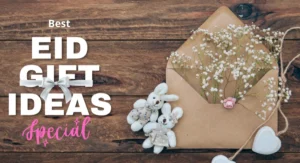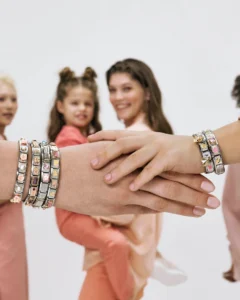Top 10 Exciting Cultures Across The World With Special Customs
By Ainul Haque
July 20, 2022
Update on : May 5, 2023

Every state across the world has its ethnical traditions. In addition, the culture and the traditions illustrate the mindsets of the people of the country.
Like their religions, history, beliefs and way of life and thinking process, etc. When people of one country travel to another one, they find it complicated to comprehend each other because of a lack of knowledge about the cultural traditions of the other countries.

Moreover, most of the tourists match their culture with the place or country they came to pay a visit. In some countries, people’s norms of behavior, gesture, attitudes, expressions, hand gestures, and traditional practices are all the same. So, travelers need to know the culture of many countries around the world.
The majority percent of people in the world still unknown about the cultures of many countries. It is greatly important to be aware of the top special and unique cultures of the world. Now we will discuss the issue elaborately which will be a great help in the field of anthropology.
Most beautiful top 10 cultures in the world
1. The Headhunters of Nagaland, India
The Northeast state of India is the residence of many interesting tribes and fascinating cultures around the world. But the Konyak tribe or the fierce headhunters of Nagaland appears to be the most captivating to us.

One of the biggest tribes in the distantly located Nagaland, Konyaks is well-known for their valours and proud in severing the heads of their enemy warriors as trophies to be hung at their Morungs, a customary community house.
The Konyaks are noticed in the rural area of Longwa in Mon district of Nagaland, the northeast state of India.
Even until 1969, headhunting has been practiced in Nagaland. The Konyaks keep faith that a young man’s passage to adulthood could only be finished after he would take back a head to the village.
And thus, they used to fight against their enemies in a bid to kill, rip off their heads, and take the head back to the Morung to decorate them.
For each killing, they get a tattoo on their face and chest, which is probably one of the most interesting aspects of the tribal people. These tattoos determine their honor, dignity, and pride. The Konyaks think that if they do not get a tattoo, they would not be given a good afterlife.
Nevertheless, with the emergence of modernity, things have modified. The Konyaks are no longer headhunters now, but they still keep their brave and fierce tendency. Only a few headhunters are remaining in the Longwa village now.
The appropriate time to see the KonyakNagas is to visit the state during the Aoling Festival usually observes in April every year.
2. Nyishi Tribe from Arunachal Pradesh, India
Nyishi female people of Arunachal Pradesh in India wear their customary dress during the Nyukom Yullo Festival which is one of the most interesting cultures around the world.

Arunachal Pradesh, located in the northeastern part of India, has a least 26 indigenous tribal communities. The Nyishi tribe is one of the largest groups of them. The cultural exercise and beliefs of Nysihis match with those of Mongoloid tribal groups that came from Myanmar. Nyishis described themselves as the successors of Abo-Tani, a mythical forefather.
They tell Tibeto-Burman and yet to improve a script. As they do not have anything in writing, it is exciting to know that they pass their culture, history, and rituals from one generation to another through an absorbing tradition of folklore.
Nyishis’ believe their ritual and culture are unfaltering. They consider that rituals, when not performed religiously, can attract trouble.
Mithun (traditional cattle) plays a significant role in all aspects of life – be it cultural, social, financial, or religious.
Groom pays the bride cost in the form of Mithun during the marriage, and they forfeit Mithun (sacred to them) to mollify their deity in almost all the formal rituals.
It was found that their Traditional Grain Ritual is quite interesting where the preacher holds a measurement cup made of bamboo and orders a woman to fill it with grain and guesses her future based on the way she filled the cup. It is interesting. Isn’t it?
Contrary to our urban society, Nyishis is progressive enough. They considered their women equally and engaged them in decision-making processes.
People loved the culture, dance or Rikham Pada, traditions and their attire, their homes or Namlo and their local brew apong served in a beautiful patha, a goblet made of bamboo shoots.
In the competitive world where people are busy pulling each other down, they live in complete peace and rapport. Honest, simple, realistic, and ever-smiling, Nyishis honor their nature and culture. They believe things the way they are and do not try to bring change into anything for their selfish motives. In addition, they are astonishing hosts.
3. Kalash People
Kalash people of Pakistan and their interesting cultures.

The Kalash, one of the most attractive cultures around the world, is a one and only people hailing from three small valleys in the mountains of western Pakistan– Rumboor, Bumburet, and Birir– make up the Kalash Valleys. Situated in northern Khyber Pakhtunkhwa state, the valleys lead to the bordering path of Afghanistan.
The Kalash people are exclusive in many ways. Some pollsters believe they are predecessors of the armies of Alexander the Great. Some of his forces stayed behind in the Indian subcontinent after his campaign throughout the region.
Though this is a general claim in India and Pakistan, the Kalash are the only people whose genes show an injection of European DNA during the time of Alexander’s campaign.
The reality of the claim aside, there is no denying the Kalash people sight nothing like their neighbours. Several males and females have fair skin and light eyes, a coloring exceptional in South Asia.
The Kalash people have their own culture and religion. Though Pakistan is a Muslim majority country, the Kalash are atomistic. Kalash culture is considered to be connected to ancient Hinduism. The Kalash people consume their self-made alcohol. Women wear brightly colored dresses and headpieces with colorful embroidery.
The embodiment of Kalash culture can be sighted during one of three big Kalash festivals.
During every festival, the Kalash people wear colorful dresses, drink their own alcohol, and dance while praying for a prosperous harvest to ensure protection for their animals, etc.
4. Khasi community of Meghalaya, India
The Khasi community is the major indigenous group home to the Meghalaya state of India.

They are an inherited community in Meghalaya. Here, properties belong to the youngest daughter of a family in the community. Their children obtain the last name of their mothers. It also implies matrilocal residence which means after marriage husbands come to reside with their wives’ families. Due to all these reasons, Khasis run very different lives from their main Indian counterparts.
If you visit Meghalaya, you would see gossiping women sitting next to each other. Others carried baskets full of chicken on their heads. Women dress up in local Khasi dresses and chop meat. It is a democratic and harmonious society. They can plow the land and can cultivate crops to earn their livelihoods. The Khasi community is also very close to nature and they live in ideal communion with nature.
5. Tibetans, Tibet
Tibetans are from Tibet, it is vital to note that the Tibetan Autonomous Region, as it has been determined by the government of China, is not the only place where Tibetans live.

Earlier, Tibet covered a much larger area. It is now a part of Gansu, Chinese provinces, Sichuan, and Qinghai. In many regions of these provinces, the majority of the population is still ethnic Tibetans.
These areas are reportedly more worthwhile to visit because, not like the Tibetan Autonomous Region, foreigners are permitted to visit these places on their own.
A trip to the Labrang Monastery in Gansu State, for instance, can be a great way to practice Tibetan culture autonomously without having to join a tour team authorized by China.
Just remain alert as some parts of these provinces are completely prohibited to foreigners and these guidelines can change at the drop of a hat, so be sure to check official websites for the latest updates.
6. Rungus, Sabah
The Momogun Rungus are an ethnic community of Borneo. They are residing primarily in northern Sabah in the area adjacent to Kudat Peninsular, Pitas Bengkoka Peninsular, Kota Marudu, and Beluran. Rungus are a sub-group of the Dayak. They have a unique language, literature, dress, architecture, and customs.

Magahau is the key festival of the Rungus tribal group. Magahau is an event of the earliest Rungus tradition associated with the festivity of the New Year in following the conventional calendar of Rungus. Like the Kadazan-Dusun tribal community, Rungus ethnic people also observe Kaamatan.
Kaamatan is a part of Magahau in Rungus fiesta. Kaamatan is one of the main festive units during Magahau. This festival is usually observed on May 31 every year. Even though there are many similarities in the way of festivity between the two races but there is also contrast.
Young people go to the cities for jobs and the future looked bleak for the ethnic community like the Rungus, who live near the tip of Borneo in Sabah, adjacent to the Malaysian side of the island.
However, tourism may keep their culture protected by encouraging them to renew their traditional crafts such as dancing, playing the nose flute, gong-making, and building traditional longhouses.
They grow food on family-owned land and cook fresh food, rice green vegetable, and chicken every day. They catch fish from the nearby sea and cook it. None of it is spicy but delicious, and it is filling.
In a nearby village of Kampung Sumangkap, shape zinc sheets into the curved, gong-maker hammer and vibrating instruments.
This customary skill is important – the gong is highly skilled in playing musical instruments in Rungus culture. It is used for all major events of the tribal community.
With the upturn of tourism in Sabah, the villagers are now able to add their income with the traditional crafts, gong-making of course. They nurture the traditional culture like bead-stringing, singing, dancing, nose flute-playing, and maintaining longhouses.
Though young people still travel to cities, they can now decide to stay closer to their homes because jobs are available near their villages.
7. Akhu Tribe, Kengtung Myanmar
The Akha is a tribal group. Now, they live in small villages at the highest elevation in the mountains of Myanmar, Thailand, Laos, and Yunnan Province of China. They paved their way from China to Southeast Asia for the period of the early 20th century.

Kengtung or Kyaing Tong is situated in the Shan State in Myanmar, and it is one of the most excellent places to visit to learn more about Myanmar’s cultural diversity. There are over a hundred different tribal groups in Myanmar.
The Kengtung district is a part of the golden triangle of Southeast Asia. Consequently, there are very much more influential than the nearby countries.
The Akhu women are well-known for their long bamboo pipes, which they like to smoke and demonstrate cheerfully to their guests.
They wear black headwear similar to a turban, and the majority of their dress is black also, except for the colorful bead necklaces and silver earrings.
Their homes are very simple and plain. The wood huts are made without any decorations sans running water, and electricity.
In respect of religion, the village used to be empirical, but like many of the tribe people in the area, the villagers are converted to Christianity by missionaries.
The women of the village live well till their 80s or 90s, which is extraordinary in terms of inadequate medical care. Besides, the men pass their 60s. It is tough to explain the difference though both women and men work very hard.
The people, who love to know interesting cultures of the cross-section of people in the world and like to explore gems out of sight, should try and hatch an effort to visit Kengtung in Myanmar.
8. Thai community people offer Red Fanta to God!
Thai community people traditionally offer a red Fanta bottle to the God idols. This is an interesting culture around the world that people have witnessed.

It is seen near a Ganesha statue at the main trance point of a mall in Bangkok. People may simply think someone left it there unconsciously. It appears as some kind of ritual. People have experienced different kinds of offerings but have never seen a soft drink given to God.
The customary Thai culture is extremely rooted in the Indian subcontinent. A few thousand years ago, sacrifices to daemonic Gods including animal, human, and blood sacrifices have been its essential part to please the spirits and stop them from interfering with the lives of ordinary people.
As civilizations matured, at one point, such sacrifices were prohibited. And each region sees the evolution of an option.
In Thailand, it came out in the form of red Fanta, whose color is like blood! And the advanced Thai community began offering red Fanta to Gods! Thailand is one of the uppermost consumers of Red Fanta at present. And most of it in the cat goes to the Gods. Fascinatingly, if a Thai drinks red Fanta, he or she is fawned upon and made fun of in his or her society for showing daemonic symptoms.
9. Black Hmong, Northern Vietnam
The Black Hmong is the minority ethnic community. They live in Northern Vietnam. The ethnic cluster has settled in many villages near Sapa town, like Lao Chai, Supan, and Cat Cat Village.

The Hmong people are currently native to many countries. They are considered to have come from the Yangtze River basin area in southern China.
In China, the Black Hmong are known as the Miao, which includes not only the Hmong but also other groups like Hmu, A-Hmao, and Qo Xiong.
The Hmong women are well-known for manufacturing cloth from hemp and dying it a deep indigo blue. They are used to wearing long blouses decorated with batik flowers over short trousers and covering their legs with long scarves. They also cover their heads with their long hair and wear blue turbans.
The Black Hmong is ethnic with powerful feminist values and commitment to their culture and customs. They appreciate gender equality, and most Black Hmong families have both men and women as the wage earner in the family. The Black Hmong women usually depend on their embroidery skills to prepare their ends to meet. Besides, the men of the community habitually are skilled in cultivating crops and handling livestock.
Apart from these, most Black Hmong women also work as tourist guides for the trip around their villages.
However, if people join a group tour, despite the tour having the designated guide and other people, the chance will be followed by some of these Black Hmong women who would interact throughout the tour, and help during walking.
People should keep in mind that the trekking track in Sapa town is so hilly that it might be hard for some people.
10. Akha community, Laos
The Akha is an ethnic group. They reside in small remote villages at upper elevations in the mountains of Thailand, Laos, Myanmar, and Yunnan Province in China. They paved their way from China to Southeast Asia in the early 20th century. The tribal community has fascinating cultures around the world.

Despite quick social and economical changes, the Akha people have one of the most interesting cultures around the world. They have been continuing the practice of many aspects of their traditions and customs. The Akha way of life is imbued with strong family bonding and strict rules.
In general, live in stilted bamboo-made houses high on the hillsides, the huts are divided into two parts based on gender. One-half of the huts are occupied by women and the rest half used by men.
Akha men are experts in farming and hunting. At the same time, the women are masters in sewing and weaving.
The Akha women are one of the few ethnic groups in Laos. They continue to avoid modern clothing instead of their traditional costume.
Containing a characteristic headdress, a short black skirt, and vest, and brightly colored leggings, most elements of the outfit are decorated with silver balls, buttons, and coins, all embellished with brightly colored threads.
Fantastically, Akha women never take away their headdresses. They sleep with it on, covered with a simple cloth to keep it protected.
Entry to an Akha village is easily accepted by a large wooden frame, recognized as a spirit gate which is hung with carvings and talismans.
The spirit gate marks the difference between the spirit realm outside the gate and the world of the Akha people, inside. The spirit gate successfully works to stop evil spirits from entering and keeping the favorable spirits inside.
















